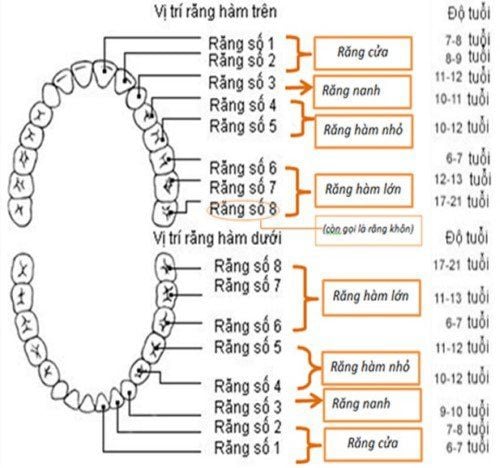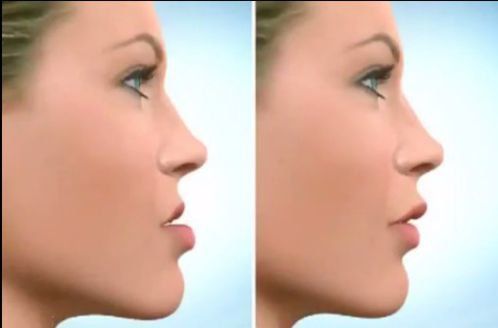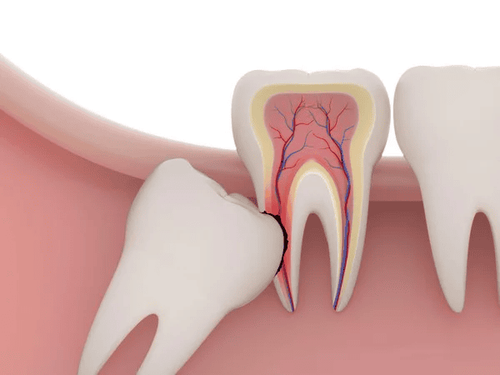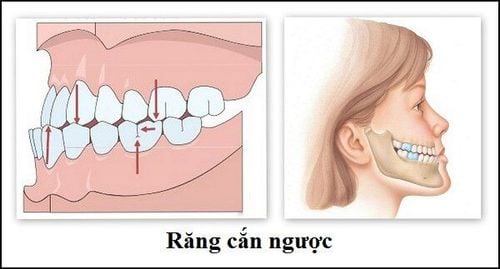This is an automatically translated article.
The article was professionally consulted by Specialist Doctor II Nguyen Khanh Nam - Doctor of Dental - Jaw - Facial - Department of General Surgery - Vinmec Nha Trang International General HospitalIn today's modern technology era, the more life develops, the need for beauty and healthy oral care is becoming more popular than ever. However, before making teeth, it is necessary to understand them well. Not everyone knows what a dental arch is? How to read and observe the position of the teeth correctly, follow the article below to find out the answer.
1. What is dental arch?
Teeth are arranged in a certain order, lying close to each other and forming a curve on a flat horizontal surface called the dental arch. Therefore, humans have two dental arches, that is, an upper and lower dental arch, in which the upper teeth will be wider and larger than the lower teeth.The line representing the dental arch is the line passing through the biting edge of the incisors, the top of the canines and the apex of the outer knob of the large molars as well as the premolars.
There are dental arch shapes as follows:
Square arch form (Hypepol): The position of the incisors and canines arranged together into a flattened arc, in which the large molars and the small molars will be arranged with each other in a straight line. Elliptical arch shape: The position of the incisors and canines will be arranged in a circle, the small molars will slightly protrude, and the large molars will retract. U-shaped arch form: There are positions of incisors and canines arranged in an arc. There are small molars and large molars arranged parallel to each other on both sides. In addition, there is also a classification of V-shaped dental arches, but this is not common.
2. Characteristics of the dental arch
In addition to understanding what the dental arch is, it is also necessary to learn the characteristics of the dental arch. Accordingly, the dental arch has the following outstanding features:The teeth are placed close to each other, contiguous with each other at the largest detour to help avoid being displaced in the direction from near to far. The upper teeth are always adjacent and match with the lower teeth to create a bite, helping to grind food during eating and chewing easily. The upper dental arch will be larger than the lower one and beam out the lower arch, so the force of each arch is different. The direction of impact force of the upper teeth is from top to bottom and from inside to outside. The direction of force of the mandibular arch works from bottom to top and from outside to inside. The teeth are fixed and firmly held on the jaws thanks to the following factors: adjacent teeth, opposite teeth, relationship between cheek and tongue. If one of these elements is missing, it will misalign the teeth.

3. How to read and observe the position of teeth
In an adult, there will be a total of 32 teeth, evenly divided 16 teeth for the upper jaw and 16 teeth for the lower jaw to chew and crush food easily. These teeth are divided into 4 main groups as follows:The incisors group includes teeth number 1 and 2. The group of canines is the number 3 teeth. The group of small molars includes number 4 and number 5. The group of large molars includes teeth No. 6, 7 and 8. Molar position 6 is the big tooth that grows at the 2nd position calculated from the position of wisdom teeth and it is located next to tooth number 7. Tooth number 6 has a role in the process of eating, Chewing is very important, is considered the "key" of occlusion and has a close relationship with the nerves located in the maxillary sinus. Therefore, it is very important to protect and not lose the 6th tooth that everyone needs to pay attention to.
If you lose your 6th molar, it will create a gap that makes everyday food easier to get stuck in your teeth. This is the ideal condition for bacteria to enter, causing dangerous oral diseases such as: gingivitis, tooth decay,...
Wisdom teeth are the number 8 teeth in the molar group. Wisdom teeth are the last teeth to erupt in the upper jaw. Wisdom teeth only appear when people are between the ages of 18 and 25. This is the last tooth to erupt, so other teeth are almost "filled" on the jaw, so this tooth tends to grow underground, or being stabbed across adjacent teeth or jostled to affect or shift the remaining teeth.
Most of the time when wisdom teeth have just grown, causing pain and tooth fatigue, dentists often recommend removing wisdom teeth to protect other teeth or limit pain.
The teeth in the four groups mentioned above grow evenly and straight, the relationship between tooth position, size and ratio is ideal. However, there are many people whose teeth are misaligned, overgrown, underbite, sparse or misaligned... This not only affects the daily eating process but also affects the aesthetics and quality of teeth more or less. mouth as well as human health.
For cases of teeth that have problems, mismatch between the upper and lower arches, most dentists will have to intervene to orthodontic early to bring the teeth to the correct position on the jaw arch, bite evenly and more straight.
Please dial HOTLINE for more information or register for an appointment HERE. Download MyVinmec app to make appointments faster and to manage your bookings easily.














